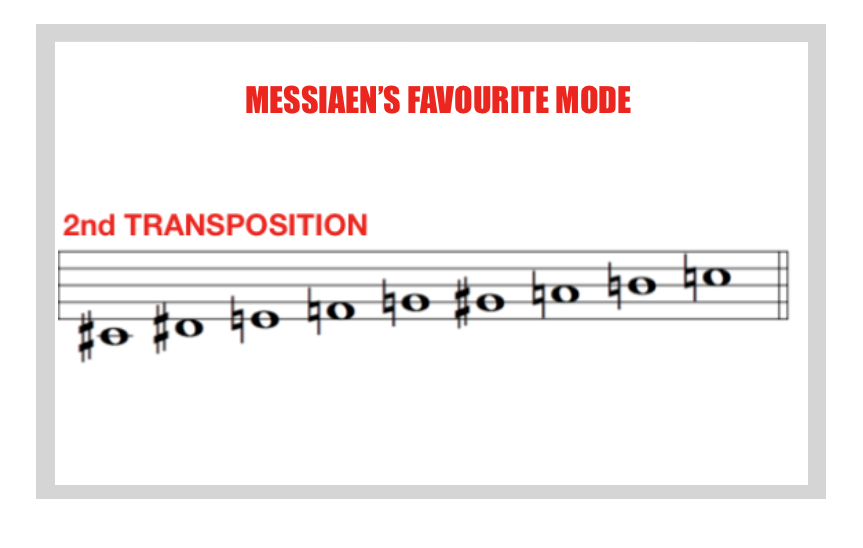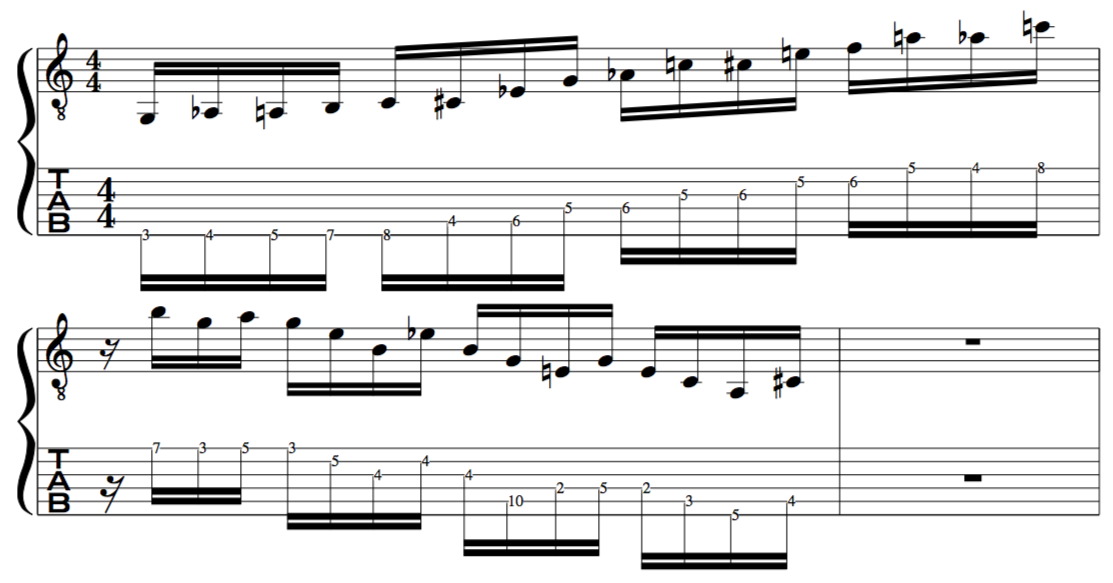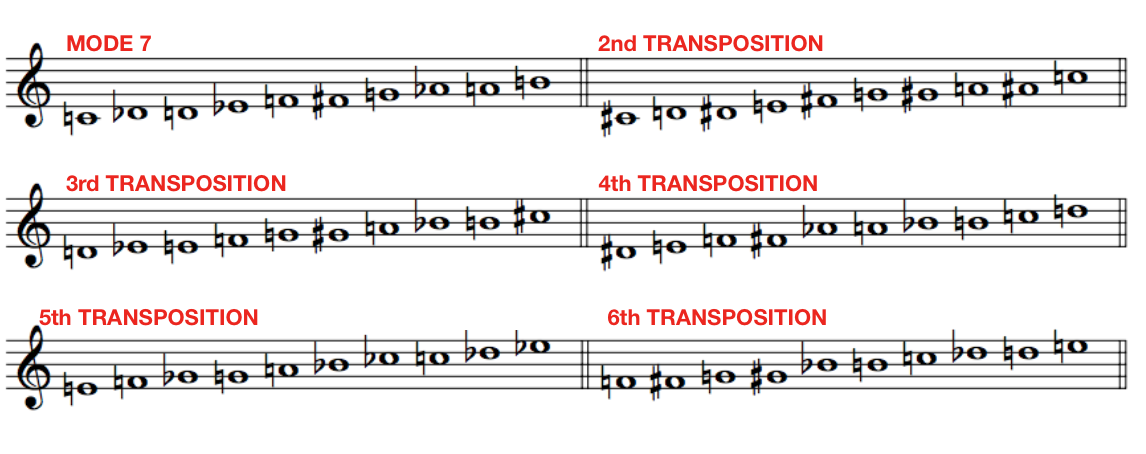MODERN MUSIC THEORY
Messiaen Modes
French 20 Century Classical composer Olivier Messiaen employed his own set of modes. [The first mode is better known as the whole tone scale and the second mode is more commonly known as the diminished or octatonic scale]. The modes have
"limited transpositions" meaning that they get to a point where they have the same notes that they started out with.
[Although it could start on a different degree].e,g, the 2nd transposition of the whole tone scale would be the same as the first but starting on the 2nd degree note of D.
In this lesson I will deal with Messiaen's favourite mode. This is the second transposition of the 3rd Mode. But, to begin with let's look at the first three of Messaien's modes and their transpositions.
The 1st Mode has 2 Transpositions It is all in Tones and it is the "Whole Tone Scale"

Mode 2 is the "Octatonic" scale or as it is also known, the "Diminished Scale" it has 3 Transpositions.

Mode 3 has 4 Transpositions and is very useful for jazz. The second transposition was Messiaens favourite of his modes.

 Below I go through the 3rd mode 2nd transposition with examples.
Below I go through the 3rd mode 2nd transposition with examples.

Below are some examples employing this scale for improvisation which in turn can be used to create interesting composition.
MESSIAEN MODE 3 [2ND TRANSPOSITION]: EXAMPLE 1

INTERVALLIC IDEA: EXAMPLE 2

nother. As you can see in the example belomode sort of weaves in and out of itself.
Weaving in and out of F major 7th: EXAMPLE 3

WEAVING IN AND OUT OF A ALTERED: EXAMPLE 4
 Short Compositional Study where I use Messaiens Modes.
Short Compositional Study where I use Messaiens Modes.
HERE ARE THE REST OF THE MESSIAEN MODES:
The 4th Mode has 6 Transpositions


The 5th Mode has 6 transpositions


The 6th Mode has 6 transpositions


The 7th mode has 6 Transpositions

Many composers like Tora Takemitsu and improvisers like Allan Holdsworth have manipulated Messiaen's modes for great improvisational effect or compositional development. Mode 3 being the most common set of pitches for jazz fusion improvisers to exploit in one form or
another
Olivier Messiaen wrote 2 books [now sometimes contained into one volume] called La technique de mon langage musical ("The Technique of my Musical Language"). In this volume he detailed his compositional technique including his use of rhythm [which I will deal with in a separate web page].


